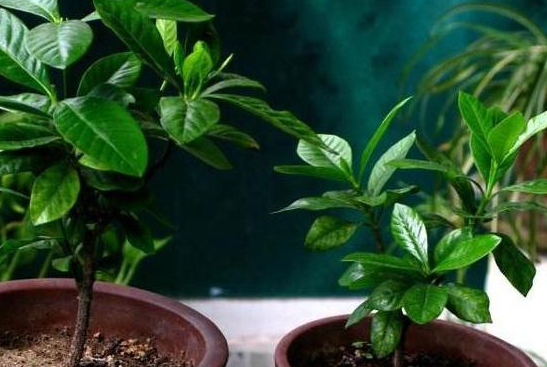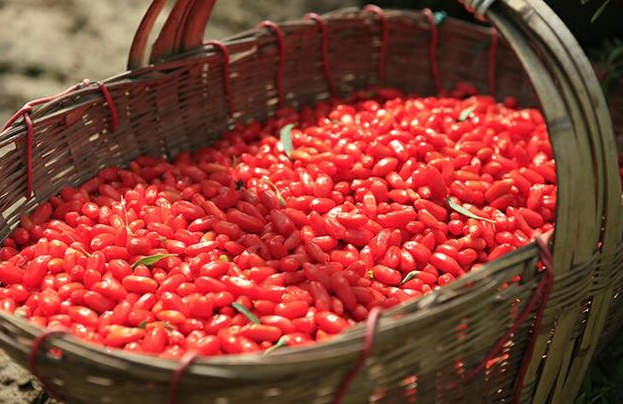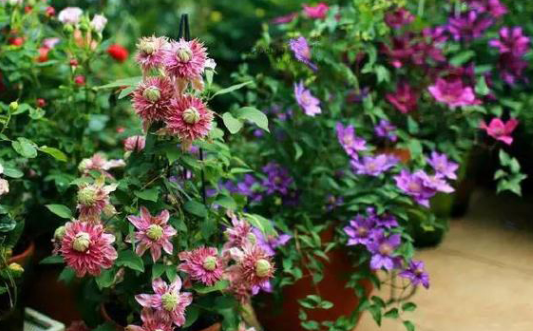How long before the cutting method of Gardenia can blossom
To talk about this gardenia, this is a lot of people like, this gardenia is fragrant, but also potted, to see how the gardenia cutting method is? How long can gardenia blossom after cutting:

Cutting method of gardenia flower:
1. Soil: loose and permeable, strong water retention.
2. Branches: 1-2 years old sturdy branches
3. Make the branch about 10 cm long, ensure that there are 2 bud points on each branch, leave 2 leaves at the top, and cut the bevel at the bottom.
4. Soak in rooting water for 30 minutes
5. Insert the medium prepared in advance, pour water thoroughly, and keep it in a cool and ventilated place to keep the soil moist and free of stagnant water. It will take about half a month to take root.
How long will the gardenia flower blossom after cutting:
It began to take root after 3 weeks. It can blossom from May to July of the following year.
This is the end of the introduction of the cutting method of gardenia, and the flowering speed after cutting is still very fast.
Cutting method of Gardenia jasminoides and matters needing attention
Gardenia jasminoides can also tolerate shade, under shade conditions, the leaf color is dark green, but flowering is slightly worse; like warm and humid climate, heat-resistant and slightly cold-resistant (- 3 ℃); like fertile, well-drained, acidic light clay loam, but also resistant to drought and barren, but the plant is easy to senescence; strong resistance to sulfur dioxide. The ability of sprouting and sprouting is strong, and it is resistant to pruning and renewal.
Cutting method of gardenia flower:
1. Cutting time: the first half of the year is in April, and the second half is from August to September. These two periods are not only the best season for cutting gardenia, but also the best time for gardenia to multiply. The temperature is generally between 15 ℃ and 35 min, and the climate is mild, so it is suitable for cutting growth. Generally, cuttings can take root and sprout in 40 days.
2. Land preparation: choose land that is more convenient for watering to ensure that there is a source of watering. Land with fertile soil, loose soil and good air permeability.
3. Cutting branch selection: cuttings should choose 1-2-year-old branches with good skin color and green leaves without insect pests.
4. Cutting branch pruning: because the branches are sparse and dense, it is appropriate to keep 3 nodes in general length, remove the bottom leaves, leave 2 leaves in the upper section, 1 mi 2 cm oblique cut in the bottom section, and 1 mi 2 cm flat cut in the upper section.
5. Cutting into the soil: insert the pruned branches directly into the prepared ground, two knots into the soil, leaving the upper section just exposed to the ground, and then pour enough water. ④ watering. Water is watered once every morning and evening to ensure the humidity after cutting, and the cutting density is 100 trees per square meter.
4. Field management: in order to ensure the survival rate, shade sheds should also be built to avoid shade and moisturize. You can insert a 60cm stake around the cutting site, set it up with branches and cover it with straw mulch. Open the cover at any time on cloudy and rainy days and cover it when the sun is strong.
Notes on cutting of Gardenia jasminoides
1. Transplanting time: generally, it is appropriate to transplant in the early and middle of March. After transplanting, water thoroughly and then cover with a layer of fine soil.
2. Watering: because gardenia likes to be wet and afraid of drought, it should be watered every night after transplanting, and then once a week after transplanting. ② topdressing. Apply some more after transplanting for 2 months.
3. Insect pests: foliar spraying in autumn and winter can prevent insect pests very well.
Culture method of Gardenia jasminoides the leaves of Gardenia jasminoides are yellowing and not blooming.
In the flowers, gardenia is undoubtedly one of the more familiar flowers, people like to breed at home, but many people do not know much about the breeding methods of gardenia, resulting in a lot of problems in the breeding process, such as yellowing leaves, not blooming and so on. Today, the editor introduces the breeding methods of gardenia and the reasons why gardenia leaves are yellow and do not blossom.
(gardenia is planted in the courtyard and has a strong ornamental effect.)
Gardenia grows like one in the four seasons, the leaf color is evergreen, the fragrance is elegant when blooming, and the white flowers are white, which is particularly beautiful and very attractive. It is often used for potted plants in courtyards and balconies. It has strong environmental adaptability, can grow well in these places, and has strong decorative and ornamental effects. The following editor will talk about the cultivation methods of gardenia from the various characteristics of gardenia.
First, sour soil culture, gardenia need scattered light, so like sour soil, if the soil is alkaline, it will make gardenia can not absorb iron very well, which has a great impact on the formation of chlorophyll, and further cause flower branches to wither and even die; so the soil must use loose, fertile acid soil, you can also add some substances with such effect.
(gardenia has a good decorative effect)
Second, put in a cool place, gardenia must not be exposed to the scorching sun, otherwise the leaves will be withered and yellow, but it does not mean that it should be put in the whole shade, because it has a certain demand for light, it is best to keep 60% of the light every day, in addition, after entering April, fertilizing should be carried out twice a month.
Third, the air humidity, gardenia like to be wet, so the air can not be too dry, according to expert statistics, if the air humidity is less than 70%, it will affect the normal opening of flowers, but if it is too wet, it will cause rotting roots and yellow leaves, so in addition to normal watering, we should often spray clean water nearby. Another problem we should pay great attention to is that water should not be watered too much, otherwise it will also affect growth. So how to water gardenia?
A, when you see the soil is dry, knock on the flowerpot with your hand. If there is an empty sound, it needs watering. The bottom of the flowerpot starts to leak and stops. It is better to add some eggs and soy milk to the watering water, which is more conducive to growth.
(gardenia in full bloom, different beauty)
Fourth, fertilization tips, gardenia like fertilizer, but can not add too much fertilizer at one time, must be thin fertilizer, must not save trouble, otherwise it will cause thick branches, big leaves, thick green, it will lose its own appreciation effect.
Fifth, temperature requirements, the growth temperature of gardenia can not be too low, because it likes temperature, generally speaking, the temperature of the growing period is 18 to 22 degrees, 5 to 10 degrees in winter, and frostbite if it is less than 10 degrees below zero, which should be paid special attention to in the north.
Sixth, proper pruning, gardenia is very easy to grow luxuriant branches, and cause airtight and disorganized feeling, which will cause nutrition dispersion and poor ornamental, so it is necessary to prune it, it is best to choose three main branches when pruning, and cut off the roots and tillers to sprout new branches at any time, and the branches should be truncated in time after the flowers are shedding, so that new branches will sprout under the cut. When the new branch grows three nodes, it is necessary to pick the heart so as not to grow blindly.
(put the gardenia in the sun.)
Seventh, disease prevention, we usually see four kinds of gardenia diseases:
A, iron deficiency, which is the most common, iron deficiency will cause the formation of chlorophyll, and then make the leaves lose green, when you can use ferrous sulfate water and low concentration of black alum water, three times a month.
B, magnesium deficiency will lead to yellow veins of the lower old leaves of Gardenia jasminoides, so it is necessary to spray with low concentration of magnesium sulfate solution.
C, the soil is too wet or too dry, this can be seen in the third point
D, the sun exposure, this can refer to the second point.
Eighth, breeding methods, Gardenia jasminoides generally have two propagation methods: cutting and striping
A, cuttings, 15 cm long with twigs in the rainy season, planted in the seedbed and rooting in 12 days.
B, in April, biennial branches were selected, which were 2O-25 cm long, buried in the soil and kept moist, about 30 natural roots were separated from the mother plant in summer and planted in the next spring.
The reason for the yellowing of the leaves of mast flower
First, improper moisture
A, too much watering, in this case, the tender leaves of the masts are dark yellow and dull, but there is no obvious change in the old leaves, so just take the flowers out of the pot and put them in a cool, ventilated place and put them back after the soil dries.
B, lack of water, leaf tip or edge withered, dry, old leaves withered and yellow shedding from bottom to top, but the growth of new leaves is relatively normal, at this time should be fully watered and thoroughly watered.
(there are many reasons why gardenia leaves turn yellow.)
Second, improper lighting
A, the light is too strong, the sunrise part of the leaf appears macula, at this time only need to move it to the shade to maintain can be restored, the new leaves will no longer have macula.
B. when there is not enough sunlight, the leaves will turn yellow or even fall off, as long as you put them in the sun to replenish the sun.
Third, improper fertilization
A, excessive fertilization, mainly manifested in the brown appearance at the tip of the new leaves, the thickening and dullness of the leaves, and the scorched yellow shedding of the old leaves. At this time, it is necessary to stop fertilization immediately, and in serious cases, the soil should be washed to reduce the concentration. B, insufficient fertilizer will also cause plant yellowing, such as iron deficiency, the leaves are light yellow or white, and the leaf veins are still green, so it is necessary to spray 0.2% Moe 0.5% ferrous sulfate for prevention and control; magnesium deficiency, the old leaves turn yellow first, then the new leaves turn yellow, and the leaf veins are still green. At this time, 0.7%-0.8% boron and magnesium fertilizer can be sprayed to prevent and control.
Fourth, the temperature is too low, too low temperature will also cause leaf yellowing, as long as it is moved into the high temperature.
The reason why the mast flower does not bloom
First, improper water and fertilizer, once excessive, it will cause plant overgrowth, reproductive growth without enough nutrients will affect the formation of flower buds, resulting in no flowering or few flowering, some blooming, or even immediately fall off. In the period of flower bud differentiation, special attention should be paid to the collocation of phosphorus and potassium fertilizer, such as 0.2% potassium dihydrogen phosphate solution, which is conducive to flower bud formation and bud pregnancy; excessive fertilization and watering during the bud period will also cause falling flowers and seedlings.
(gardenia hasn't blossomed all the time, so be careful.)
Second, the light is not suitable, Jiaozi flowers like shade, we should pay special attention to the strong light in summer and too weak light in winter, too strong and too weak will affect the blossom.
Third, the soil contains high alkali, Jianzi flower likes acidic soil, cultivated mast flower soil contains high salt and alkali, it will cause plant yellowing, and eventually affect flowering.
Fourth, no pruning and shaping, messy masts and branches, a large number of miscellaneous branches consuming a lot of nutrients and branches too dense, affecting photosynthesis, are all important reasons for not flowering.
Fifth, diseases and insect pests are serious. I believe everyone can understand that serious diseases and insect pests are bound to lead to the loss of flowers.
Method
How to cultivate daffodils recommend the culture method of daffodils
More plants:
[ping an tree] [evergreen] [evergreen] [star anise plate] [southern bamboo] [ivy] [arrow lotus]
[Magnolia] [Primrose] [Spring Orchid] [Milan] [Magnolia] [Magnolia] [White Crane] [Fire Crane]
[Cymbidium] [eight Immortals] [Dahlia] [Chrysanthemum morifolium] [clematis] [plum] [pansy] [Daphne]
[tulips] [night incense] [evening jade] [mulberry] [longevity flowers] [African chrysanthemum] [mimosa] [bluebells]
[water lily] [perfume lily] [hydrangea] [red maple] [chicken claw maple] [string of red] [iris]
- Prev

How can potted Lycium barbarum sprout
If you want to talk about this Chinese wolfberry, it is really super delicious and delicious. Do you want to raise your own potted plants? Let's take a look at the planting method of potted Chinese wolfberry: the first method is to plant Chinese wolfberry seeds. You can soak the dried Chinese wolfberry in water, crush it with your hand, and then fish out the seeds and meat floating on the water and throw them away.
- Next

The reason why Clematis does not bloom and what to do? what are the maintenance methods in winter?
Clematis, known as the Fujimoto Queen in Europe, shows that it blossoms beautifully. Clematis like fertile, well-drained alkaline loam, avoid stagnant water. Summer is relatively dry, if the soil can not retain water, the plant is easy to die. The reason why Clematis does not blossom and what to do the florescence of Clematis
Related
- Fuxing push coffee new agricultural production and marketing class: lack of small-scale processing plants
- Jujube rice field leisure farm deep ploughing Yilan for five years to create a space for organic food and play
- Nongyu Farm-A trial of organic papaya for brave women with advanced technology
- Four points for attention in the prevention and control of diseases and insect pests of edible fungi
- How to add nutrient solution to Edible Fungi
- Is there any good way to control edible fungus mites?
- Open Inoculation Technology of Edible Fungi
- Is there any clever way to use fertilizer for edible fungus in winter?
- What agents are used to kill the pathogens of edible fungi in the mushroom shed?
- Rapid drying of Edible Fungi

